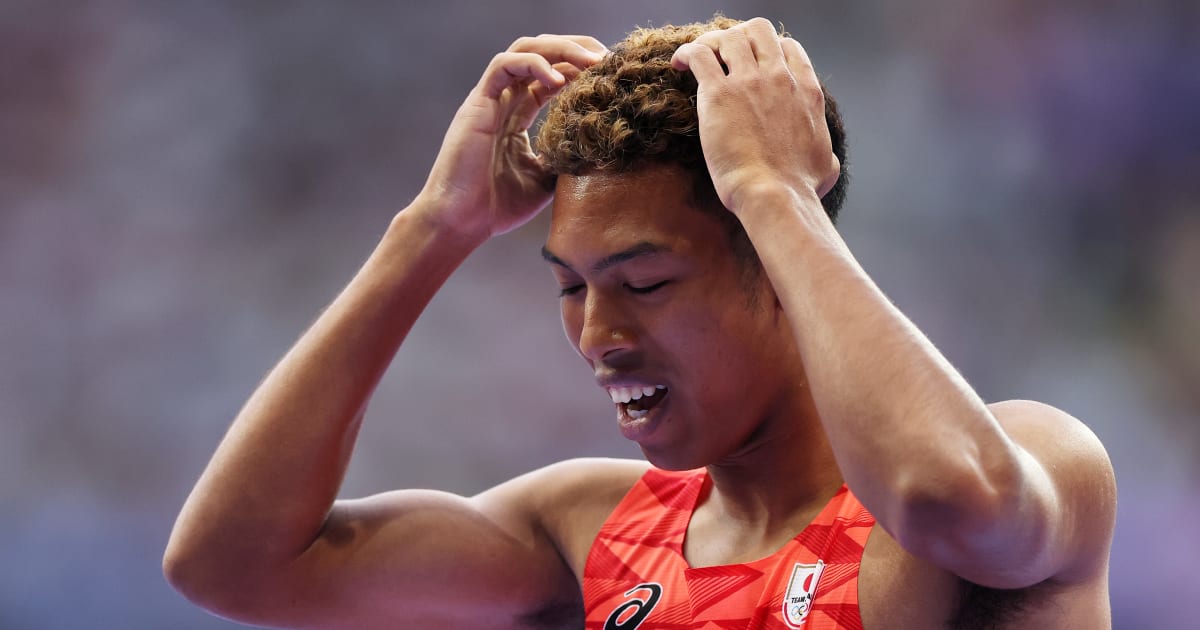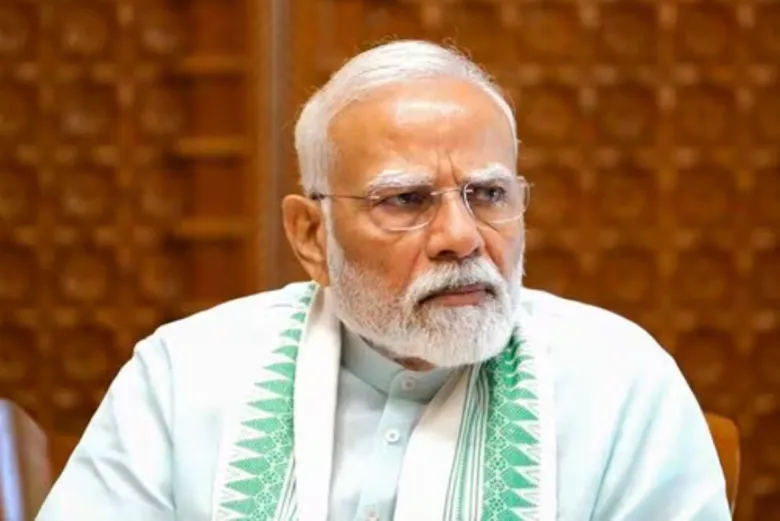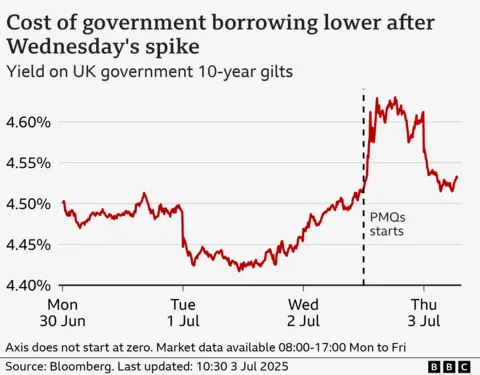- Life-sized Labubu doll sells for $150,000 as celebrity hype fuels global toy craze NationalWorld
- Meet Zimomo, The ‘Labubu’ Doll Worth Rs 50,000 That Did Not Break The Internet NDTV
- Meet Labubu, the viral Chinese toy taking the world by storm MSN
- Why Labubu Dolls Are the New Obsession The Teen Magazine
- Fans line up to get a Labubu in Austin KXAN Austin
Blog
-
Life-sized Labubu doll sells for $150,000 as celebrity hype fuels global toy craze – NationalWorld
-
Railways reservation offices to remain close on July 6 – ARY News
- Railways reservation offices to remain close on July 6 ARY News
- Railways reservation offices to remain close on Youm-e-Ashura Ptv.com.pk
- Govt announces July 5-6 holidays on account of Ashura The Express Tribune
- Sindh seeks suspension of cellular services on 10th Muharram Geo.tv
- NADRA offices to remain closed on THESE days ARY News
Continue Reading
-
No loadsheding on 9th, 10th Muharram – ARY News
- No loadsheding on 9th, 10th Muharram ARY News
- Peshawar police on high alert ahead of Ashura Dawn
- Civil defense force deployed to maintain law, order during Muharram nation.com.pk
- Quetta Electric Supply Company (QESCO) Ensures Uninterrupted Power Supply During Muharram dailyindependent.com.pk
- Major roads in Peshawar closed, strict security measures in placed Associated Press of Pakistan
Continue Reading
-

Abdul Hakim Sani Brown limps into crunch meet with hip bone bruise
Even before the gun has gone off, Abdul Hakim Sani Brown is already in a race against time.
Sani Brown said on Thursday (3 July) that he will compete at the Japan Athletics Championships 2025 with a bone bruise in his right hip joint, a freak injury he suffered last week in training.
“I’ll be honest, I was starting to pick it up, but then last month on the 26th, I had a slight accident,” Japan’s men’s 100m hopeful said at Tokyo’s National Stadium, where the championships will be held from Friday, doubling as the Japanese trials for the World Athletics Championships in September, which is also in Tokyo.
“I went to the hospital, had an MRI and a scan, and the doctor told me I had a bone bruise in the hip joint. He said I should sit still, [and not move], let alone run in a meet. Three weeks for it to completely heal, he said.
“But as a professional, who’s been at the forefront of track and field here, and also for all the fans who come out to watch as well as all the kids who support me, I feel compelled to go out there and run.
“’l’ll do everything I can to get ready for competition.”
Sani Brown said he was hurt last Thursday but did not think much of it initially. When the pain did not go away, he went for a check-up on Monday, when he received the diagnosis.
The two-time Olympian – who set a personal best of 9.96 at Paris 2024 – needs to finish in the top three this weekend to qualify for the worlds. He could still make the team by virtue of his world ranking, a Japan-best 17th, but won’t know of his status until late August if he relies on that route.
There is also the risk that the 26-year-old could aggravate the injury by hitting the track against doctor’s orders, which would make him a question mark for a home world championships.
But evidently, Sani Brown feels compelled to start on Friday.
“Basically, anything that involves raising my knee leads to pain,” he said. “It really was a freak accident. I was off balance and just put too much stress on the bone.
“I don’t know how far I’ll be able to go until I actually run, but it is an important meet where I have to give it everything I have. I’m not thinking at what percent I’m at, but prepare as well as I can and take it one race at a time.”
The men’s 100m heats and semi-finals are on Friday, followed by the final on Saturday.
Continue Reading
-

BBC deemed Bob Vylan ‘high risk’ before Glastonbury
The BBC deemed Bob Vylan “high risk” before their controversial Glastonbury set, the corporation has said.
The punk duo led a chant of “death, death to the IDF [Israel Defence Forces]” during their set, which was available to watch via a live stream on iPlayer on Saturday.
In a statement, the BBC said the corporation is taking action to “ensure proper accountability” for those found to be responsible for the broadcast.
BBC News understands that a number of staff have been moved off their day-to-day duties from the music and live events team.
BBC chair Samir Shah said the decision not to pull the live feed was “unquestionably an error of judgement”.
In a statement to staff, director general Tim Davie said he “deeply regrets that such offensive and deplorable behaviour appeared on the BBC and want to apologise to our viewers and listeners and in particular the Jewish community”.
The BBC said Bob Vylan had been “deemed high risk following a risk assessment process applied to all acts appearing at Glastonbury”.
“Seven acts including Bob Vylan were included in this category and they were all deemed suitable for live streaming with appropriate mitigations.”
The statement continued: “Prior to Glastonbury, a decision was taken that compliance risks could be mitigated in real time on the live stream – through the use of language or content warnings – without the need for a delay. This was clearly not the case.”
The BBC noted the live stream was monitored “in line with the agreed compliance protocols and a number of issues were escalated”.
Warnings appeared on the stream on two occasions, but, he added: “The editorial team took the decision not to cut the feed. This was an error.”
Davie, who was attending Glastonbury himself on the day, was “subsequently made aware of what had happened and instructed the team that none of the performance should feature in further coverage”.
The BBC said the team on duty prioritised stopping the performance from becoming available on demand, meaning that the set would not appear on iPlayer or BBC Sounds.
However, the live feed remained available for several hours, meaning viewers were able to rewind and view the content.
“Given the failings that have been acknowledged we are taking actions to ensure proper accountability for those found to be responsible for those failings in the live broadcast,” the BBC said. “We will not comment further on those processes at this time.”
The BBC also said it would be making “immediate changes to livestreaming music events”.
These would, it said, include:
- Any music performances deemed high risk by the BBC will now not be broadcast live or streamed live
- The corporation’s Editorial Policy unit will always be available on site at major music festivals and events, to improve compliance processes and the speed of available advice
- The BBC will provide more detailed, practical guidance on the threshold for withdrawing a live stream.
In a statement, BBC chair Samir Shah apologised “to all our viewers and listeners and particularly the Jewish community for allowing the ‘artist’ Bob Vylan to express unconscionable anti-semitic views live on the BBC”.
“This was unquestionably an error of judgement. I was very pleased to note that as soon as this came to the notice of Tim Davie – who was on the Glastonbury site at the time visiting BBC staff – he took immediate action and instructed the team to withdraw the performance from on demand coverage.”
Continue Reading
-

Solstad Offshore ASA: Invitation to webcast – presentation of Q2 quarter and first half year 2025 financial results
03.07.2025
Solstad Offshore ASA: Invitation to webcast – presentation of Q2 quarter and first half year 2025 financial results
Skudeneshavn, July 3, 2025
Solstad Offshore ASA (SOFF) welcomes to presentation of its Q2 2025 report, Monday, July 14th, at 10:00 am CEST. The presentation will be held by CEO Lars Peder Solstad and CFO Kjetil Ramstad. It will be possible to ask questions.
The report and the presentation will be released 07:00 am CEST. Monday, July 14th, 2025, and made available on www.solstad.com and www.newsweb.no.
SOFF Q2 2025 presentation:
Date: Monday July 14
Time: 10:00 a.m. CEST
Format: Live webcast
Language: English
Link: https://channel.royalcast.com/hegnarmedia/#!/hegnarmedia/20250714_3
A recorded version will be made available at https://www.solstad.com
Contacts
Lars Peder Solstad CEO, at +47 91 31 85 85
Kjetil Ramstad CFO, at +47 907 59 489
Solstad Offshore ASA
www.solstad.com
Continue Reading
-

Modi’s new normal and Pakistan’s strategic firewall
– Advertisement –
By Qazi Nashat Akram
ISLAMABAD, Jul 3 (APP)::“Nuclear Weapon states don’t go to war”…..an established dictum in Strategic Studies. Perhaps, the Modi-led Government of India intends to establish a New Normal in South Asia. Instead of toiling for cooperation, it gives precedence to confrontation.
The Modi-led Government is purportedly obsessed with hurling antagonistic remarks against Pakistan and undermining the potency of its military. In pursuit of hegemonic designs, hawkish elements of the Indian politico-security establishment are ploying to carve out space for limited war under the nuclear threshold. The ultranationalist Indian prime minister even went on to declare Pakistan a sanctuary for terrorist groups without providing any actionable evidence. In his post-ceasefire statement, he said military operations have been paused, and will resume in the wake of any terror attack. Such aggressive stance from the top echelon of the Indian Government proves horrendous for regional stability and sustainable peace.
The doctrinal evolution of their military strategy to integrate offensive-defense threatens fragile peace in South Asia. Pakistan has always maintained its commitment and will to establish peace while showcasing the resolve and capability of its Armed Forces to respond to Indian aggression.
The aerial strikes conducted by India against Pakistan in the aftermath of Pulwama and Pahalgam episodes stand as a testament to the recklessness, impulsiveness, and irresponsible attitude of its civil-military leadership. In both cases, India attempted to materialize its so-called punitive strikes against alleged militant camps inside Pakistani territory, as enshrined in its Basic IAF Doctrine (2012), Joint Armed Forces Doctrine (2017), and Land Warfare Doctrine (2018). In addition to kinetic operations, the Indian Government launched a disinformation campaign to justify its illegal actions and clinch domestic legitimacy.
Under the Article 51 of The UN charter, Pakistan’s response was in line with its Full Spectrum Deterrence. In Feb 2019, PAF targeted open spaces near sensitive military installations of India to demonstrate its will and capacity to inflict massive damage to the adversary. In May 2025, Pakistan’s response encompassed Airstrikes and precision missile strikes against military targets. Pakistan denied India the feasibility of limited War in South Asia via its Quid Pro Quo Plus (QPQ+) response.
South Asia is a least-integrated, conflict-prone, and impoverished region. All these factors exacerbate belligerence between rival states. Interestingly, it is becoming the center of focus for global powers owing to its strategic significance. The USA is bolstering India’s defense capabilities by engaging it in alliances like QUAD and establishing intelligence-sharing platforms like COMCASA and BECA. The convergence of global power competition and historical hostility between India and Pakistan proves cataclysmic for regional stability and peace.
Moreover, scholars of International Relations cannot rule out the possibility of limited war between asymmetric militaries, as evident in recent military engagements. The development of Full Spectrum Deterrence by Pakistan, with the introduction of Tactical Nuclear Weapons (TNWs), tremendously increases the cost of military adventurism for India. India terms the threat of TNW deployment in response to Blitzkrieg-style warfare formations—Integrated Battle Groups (IBGs)—as a nuclear bluff. The befitting response, with an additional premium package from Pakistan, vehemently denies such irrational strategic calculus of Indian politico-military leadership.
Expressing his opinion in a recent roundtable at the Institute of Regional Studies, titled Pakistan-India Confrontation 2025: Decoding the New Normal, Air Commodore (R) Dr. Zia Ul Haque Shamsi underscored immaculate professionalism and impeccable performance of PAF during the high-intensity aerial battle in the wake of Ops Bunyan Um Marsoos, which culminated in the downing of six highly advanced IAF platforms. He rightly proposed that the strategy of D2—Deterrence and Diplomacy—must be seamlessly augmented into Pakistan’s integrated response to effectively counter the flawed narrative and reckless aggression of the adversary.
In a nutshell, the risk of nuclear conflict persists in South Asia owing to the extremist, Hindutva-driven leadership of India. With its effective, precise, and proportionate response, Pakistan has increased the cost of so-called punitive strikes. Furthermore, Pakistan’s robust, synchronized conventional retaliation, coupled with a credible strategic force, puts cold water on Modi’s hot pursuit of establishing a New Normal in South Asia.
Continue Reading
-

UK borrowing costs fall as investors’ nerves ease
Karen HogganBusiness Reporter
 Getty Images
Getty ImagesThe cost of government borrowing has fallen in early trade, partly reversing a surge prompted by the chancellor’s emotional appearance in the Commons the previous day.
The yield on UK 10-year bonds fell to 4.52%, down from 4.61% at Wednesday’s close, as markets reacted to the prime minister’s comments that he worked “in lockstep” with Rachel Reeves.
The pound, which also fell on Wednesday, rose to $1.3668, although it has not regained all the ground it lost.
One analyst told the BBC that financial markets seemed to be backing the chancellor, afraid that if she left her job then control over the government’s finances would weaken.
“It looks to me like this is a rare example of financial markets actually enhancing the career prospects of a politician,” Will Walker Arnott, head of private clients at the bank Charles Stanley, told the BBC’s Today programme.
“I think the markets are concerned that if the chancellor goes then any fiscal discipline would follow her out the door and that would mean bigger deficits.”
Mohamed El-Erian, president of Queens’ College, Cambridge, and chief economic adviser at Allianz, warned that markets were likely to remain on edge.
“The minute you put a risk premium in the marketplace, it’s very hard to take out,” he told the Today programme.
“I suspect that we will see some moderation, but we will not go back to where we were 24 hours ago.”

One reason sharp movements in bond yields matter to individuals is because they can have an impact on the mortgage market, with higher yields potentially making mortgage deals more expensive.
Rises or falls, particularly in five-year bond yields, can feed through to so-called swap rates which lenders use to price their new fixed mortgage deals.
This was most obviously made clear following the mini-budget during the premiership of Liz Truss.
Mortgage rates have been steady of late, with lenders making some relatively small cuts as they compete for customers.
Reeves was at Prime Minister’s Questions on Wednesday, following the government’s U-turn on plans to cut billions of pounds through welfare reforms, when she became emotional and started crying.
The reversal of welfare reforms puts an almost £5bn black hole in Reeves’s financial plans.
The rise in borrowing costs was initially sparked by the feeling the chancellor might step down, seeming to indicate that the markets are supportive of her.
A Treasury spokesperson later said the chancellor was upset due to a “personal matter”.
On Wednesday evening, Prime Minister Sir Kier Starmer backed Reeves, telling BBC Radio 4’s Political Thinking with Nick Robinson that he worked “in lockstep” with Reeves and she was “doing an excellent job as chancellor”.
Reeves has said her fiscal rules are “non-negotiable”. One is that day-to-day spending should be paid for with government revenue, which is mainly taxes. Borrowing is only for investment.
Jane Foley head of FX strategy at Rabobank said the “gutting” of the welfare bill made the chancellor’s job more difficult because the “savings that she had planned for will not be forthcoming”.
In consequence, she said, Reeves faces a choice of raising taxes, cutting spending elsewhere or issuing more government debt, all of which options face opposition from one quarter or another, meaning the government is “boxed in”.
“However, investors do place a lot of store in political stability. Reeves has demonstrated an understanding about the importance of the maintaining fiscal discipline and it is not clear who would replace her and if that person would have the same credibility amongst the investment community.
“Thus, Starmer’s demonstration of faith in Reeves has provided some reassurance to the market this morning.”
Continue Reading
-

Neeraj Chopra thrilled to wear two hats as athlete and organiser for NC Classic 2025
The competition is being co-organised by Neeraj himself, along with JSW Sports – the firm that manages him – the Athletics Federation of India (AFI) and World Athletics.
Neeraj has also taken part in high-level meetings with AFI and World Athletics officials and has been regularly coordinating with multiple departments within JSW Sports to make the NC Classic a success.
“I’m spending time with every department at JSW Sports, understanding things, giving my inputs and suggestions and it’s been a fantastic experience,” the Indian javelin throw ace noted.
Originally slated for May 24 at Panchkula’s Tau Devi Lal Stadium, the NC Classic was shifted to the Kanteerava Stadium in Bengaluru due to issues with the floodlight at the earlier venue.
The event hit another roadblock as it had to be postponed due to India-Pakistan political tensions and was later rescheduled to July 5.
Neeraj has been heavily invested throughout and has played an active role in navigating through the challenges. In fact, he had reached out to the Karnataka Chief Minister personally to help facilitate the shift from Panchkula to Bengaluru.
As part of his many roles, Neeraj has approved personalised welcome letters and banners for each of his 11 competitors at the NC Classic, including seven international athletes.
He’s also involved in finalising the entertainment line-up, vetting the stadium video content and supervising the athlete fan zone. On Wednesday, he also personally inspected the gym at the Kanteerava Stadium.
Taking time out from promotional shoots to training sessions, Neeraj has also made time to go over the dinner menu for athletes and officials.
In the lead-up to the competition, Neeraj has been heavily involved in promotional activities for the NC Classic
Former tennis player and Olympian Manisha Malhotra, who works closely with Neeraj at JSW Sports, revealed exactly how hands-on Neeraj has been in making sure that the NC Classic ends up as a success.
“Every day he’s going to the stadium and is monitoring stuff. He’s also saying that he’s never been to a city so many days before the event. Usually, he flies in, does a press conference, competes and flies out. He’s having to do some running in Bengaluru other than just training,” she revealed.
“It’s his event so he can’t say it is my training time, so don’t ask me anything. Everybody is surprised to see his new avatar.”
Continue Reading
-

Canonical adds extra shots to Ubuntu Java • The Register
Canonical has some extra toppings, flavorings, and offers coming for its bigger Java fans – because the suits swallow a lot of the stuff.
A cluster of related announcements from the house of Ubuntu indicate it is taking Java – and supporting Java – seriously.
It’s introducing its own builds of OpenJDK and offering extended support for them via Ubuntu Pro. It’s offering new chiseled Ubuntu containers for three LTS versions of OpenJRE: 8, 17, and 21 (Chisel is Canonical’s FOSS tool for cutting down packages to their essentials). It’s also making it easier to get started developing apps using the Spring framework with a new pre-assembled “devpack” for Spring.
You don’t tend to see it around much anymore, but Java is very much alive, even thriving. It’s not that it’s not there, it’s just that you may not recognize it. It got middle-aged, lost its hair, put on a suit, and went to work in a big office block.

Java – getting older, ditching the red nose and cyberpunk accessories
It’s also not coincidental that, thanks to this very enterprise use, there’s gold in them thar JARs. Java is probably the main reason Oracle bought Sun 15 years ago, and some half a dozen years later, after everyone relaxed, Big Red figured out how to monetize it.
Once Oracle began charging for the JDK, that drove people to open source equivalents built from OpenJDK. One company trying to help with that was Spring developer Pivotal, which offered prebuilt OpenJDK binaries at a website called AdoptOpenJDK. That’s evolved into an Eclipse-based working group with the whimsical name of Adoptium. (Eclipse started out inside IBM, which is also an Adoptium backer. See what we meant about it going corporate?)
So, for instance, Eclipse offers a pre-built Java SE runtime called Temurin, maintained by Adoptium. Because there are multiple Java runtimes out there now, there’s a quality evaluation toolkit, too, called AQAvit. We’re only bringing up Adoptium and its tools because Canonical references them. Its enterprise Java datasheet [PDF] compares its “chiseled” containers with what it repeatedly calls the “Apache” Temurin ones – favorably, naturally. Apparently, they’re half the size. It also says that they’re tested with “Eclipse Aquavit” [sic], but honestly, after trying to nail this stuff down, we could use a stiff drink, too.
The gist is that you can easily install OpenJDK on Ubuntu. It’s tested, and you can obtain compliancy certification for it. Canonical has documentation on installing a development environment, and it also covers Java build tools such as Maven and Gradle. You can get long-term commercial support through Ubuntu Pro, which has been free for up to five machines for a few years now, and which since last year increased the long-term support lifetime from 10 years to 12.
There are wider aspects than this, as a May blog post on Discourse discussed. As well as the new Devpack for Spring, Ubuntu also supports building native binaries with GraalVM, a special CRaC JDK that enables taking snapshots of the entire Java environment. Outside of Java, it also offers Rust and Zig. Aside from Java, though, its main focus is .NET. As we covered in 2022, it built .NET 6 in as standard and, just a few months later, .NET 7 as well. .NET 10 is coming soon.
In terms of why this emphasis, it’s probably relevant to note the changing landscape outside of Ubuntu. As The Register reported in January, Oracle’s move to charge a lot more for Java licenses is not winning it any friends, with users urged to check their usage before the bills arrive. The change has stung UK higher education, despite some discounts. Separately, promoting its appeal for developers is a big part of the Fedora marketing, complete with a special developer portal. ®
Bootnote
Java SE, incidentally, refers to the Standard Edition, in other words the ordinary standalone version for local applications. The fancy corporate edition, once called Java Enterprise Edition, is now called Jakarta EE for reasons that no doubt made sense at some point. Java ME targeted mobile phones in the era before smartphones, but now it’s more aimed at the Internet of Things. As far as smartphones go, Android dominates and it uses Java too, but that is a whole other story.
Continue Reading
